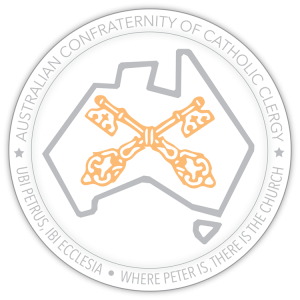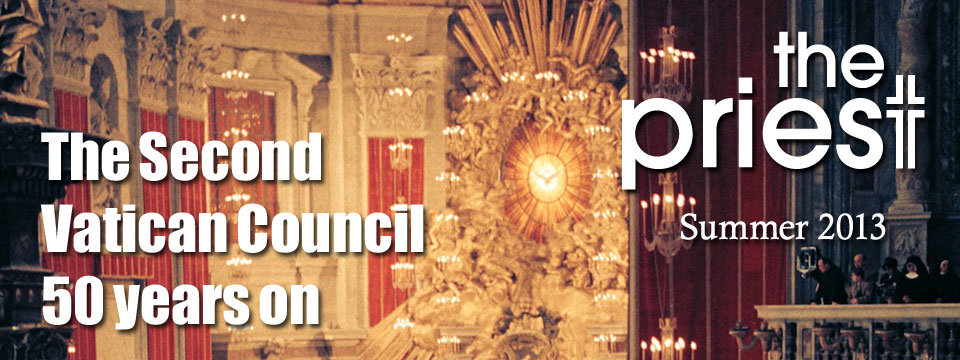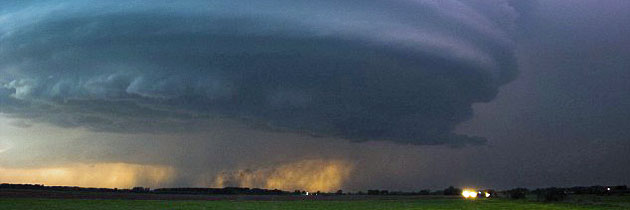Evangelising the Digital Continent
Social networking has passed from youthful fad to cultural force. ‘Social media’ like Facebook, Twitter and the blogosphere were once poor cousins to websites and e-mail, but they now dominate the Internet, and they are integral to the New Evangelisation.
Pope Benedict has repeatedly called for a new wave of missionaries to evangelise the “digital continent.” The Holy Father recognises that it falls particularly to the young — who have a natural affinity with new media — to become digital missionaries.
Nonetheless, parishes also have an important role to play. I propose to write a series of articles advising how parishes can evangelise the digital continent. This article focuses on the parish website. The advice that follows is both technical and practical. It’s worth showing to your website developer.
From print to digital
The primary means of communication in most parishes is the Sunday bulletin. But just as newspapers are on the way out, so too are printed bulletins.
Over eighty per cent of Australian adults are regular Internet users, and this number will keep growing. The Internet is fast becoming the primary means of news consumption. In response to the changing habits of news consumers, the Internet needs to become the parish’s primary means of communication.
The bulletin will never disappear totally, but it is destined to become secondary — a backup. The change I’m describing isn’t imminent; it’s a medium-term proposition. But we can (and should) equip our parish websites now, so that we are prepared for the coming transition.
The parish web address
Before stepping into the world of social networks, it’s worth reviewing your website domain, and changing it if necessary. Your domain name should be intuitive, easily pronounced and easy to spell, and preferably no longer than 15 characters.
Intuitive
Don’t believe the conventional wisdom that short domains are better than long domains. The West Melbourne parish has a very long domain — www.stmaryswestmelbourne.org — but it is preferable to www.smwm.org, which is much shorter, but not at all intuitive.
Easily pronounced
Avoid hyphens and underscores: www.st-marys-hamilton.org might look pretty, but it sounds clunky. Imagine the phone advice: “It’s double you double you double you dot, saint hyphen, mary’s hypen hamilton, dot org dot ay you.” A good domain name should pass “the telephone test:” easy to say, and easy to spell.
Easily spelt
If I was developing a website for the Immaculate Heart parish of Ararat, I would avoid www.immaculateconceptionararat.org. How many people can easily spell ‘immaculate’ — or, for that matter, ‘conception’? Instead, I would register something like www.araratcatholic.org. Easy to say; easy to spell.
Fifteen characters
A domain name can be as long as you like, but Twitter allows only 15 characters for an account name. It’s preferable to have a web address which doubles as your username across social networks.
If your present domain name isn’t intuitive, easily pronounced and easily spelt, you should get a new domain name. You can register a web address for less than $10. New names can be tested at namechk.com. This is a free service which reports the availability of your name across a variety of platforms: the web, Facebook, Twitter, etc.
Your website’s platform
‘Bouncy sites’ and ‘sticky sites’
Many parish websites are ‘static websites.’ This means that their content doesn’t change much — mass times, staff profiles and contact details don’t need to be constantly updated. But static websites are also ‘bouncy websites.’ A user’s contact with the site resembles a ball bouncing against the wall. They visit once or twice, and they don’t come back. They have no reason to come back — they already know what’s on the site.
The best parish websites are ‘dynamic websites.’ This means that their content is constantly updated — parish announcements are published in real time; photos and video of the latest function are promptly uploaded; homilies and reflections are posted weekly. Dynamic websites are also ‘sticky websites.’ Users get stuck to site, revisiting again and again because the content is always changing.
Dynamic websites consume time and resources. Perhaps you can’t commit to maintaining a dynamic website right now. That’s fine. A static website is better than no website! But you should develop static websites which will easily become a dynamic website later. You need a CMS.
A Content Management System (CMS)
A CMS is a software package which a developer uses to build your website, and which you can use to update and maintain your website. A CMS allows you to produce a webpage almost as easily as you produce a letter on Microsoft Word. The most popular CMSs are WordPress and Joomla! Both are free, and both are recommended.
WordPress was designed for blogs, but it can be adapted to parish websites. It is easy to learn and use, but it’s not as comprehensive as Joomla! Joomla! was designed for websites, and is ideal for parish websites. It is powerful and flexible, but it’s not as user-friendly as WordPress. Discuss your needs with a capable web designer, who can recommend the most suitable CMS for your parish.
Content
Designing a good front page is very important. Most users abandon a site in the first five seconds if they are turned off by the design or overwhelmed with information. The ideal parish website would include all of the following, and present it attractively. (The ideal parish website doesn’t exist, but why let the perfect confound the good?)
Immediately available on the front page:
- The location and address of the church and presbytery, with a link to Google Maps.
- The Sunday Mass times. The schedule for weekday Masses and confessions might also be listed, or at least accessible via a prominent link.
- Contact details: phone numbers, fax numbers, an e-mail address.
- A search bar.
- A single and simple navigation menu.
- A picture of the church building.
- Lots of faces. (Smiling faces!)
If the parish website is to become what the Sunday bulletin used to be, I would argue the front page should also include dynamic content — that is, content which is always being updated:
- Recent news.
- Upcoming events.
- Featured announcements.
A checklist
Delving deeper into the website, the ideal parish website provides the following content (some of this, obviously, is repeating what appears on the front page):
- Location and address of the church and presbytery
- Mass and confession schedules
- Contact details
- Calendar of events.
- Personnel info — with contact information. Especially e-mail addresses!
- Parish organisations
- Parish news/blog
- History
- Mission
- Electronic forms for church bookings, etc. Or at least downloadable forms.
- Embedded videos
- Photo galleries
- Online giving
- Audio podcasts
- Information for returning Catholics
- Information for prospective Catholics
- Wedding information
- Baptism information
- Links to the parish schools
Website development and maintenance
Designing your website
Because a good front page is so important and so difficult, it is worth hiring a professional to design your site. A professional developer can take care of domain parking and web hosting, and they can also provide basic training to parishioners who will be entrusted with the ongoing maintenance.
Choose your web designer carefully. Ask around. Happy customers are the best recommendation. The larger archdioceses have their own inhouse web designers, who may offer their services to parishes. In such cases, satisfaction is more or less assured, but it’s often charged at a premium price. Freelance designers can offer similar services at a more competitive price, but of course the risk of dissatisfaction is higher.
I can personally recommend Matthew Price (www.mbprice.com), a freelance designer in Melbourne who has an extensive portfolio of parish websites.
Brief your web designer carefully. Show them your checklist. Whether your site is static or dynamic, insist on a CMS.
Maintaining your website
Maintaining a dynamic website is not a one-man job. It takes a small team of committed members, who meet regularly and keep each other accountable. Content needs to be produced and uploaded every week, be it articles, photos or videos. More importantly, content needs to be updated. There’s nothing worse than a website that misleads users by providing out of date information.
St Mary’s Parish in Hamilton is presently forming an ‘iTeam,’ which will not only oversee our website, but co-ordinate all of the parish’s activity on the digital continent. Future articles will explore the parish’s expansion into social media —Facebook, Twitter, blogs, etc.
My next article on the digital continent will relate to social media. The most important step, though, is the establishment of a good website.






